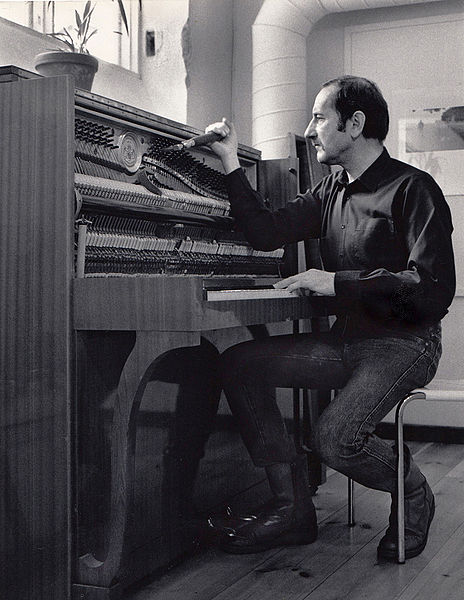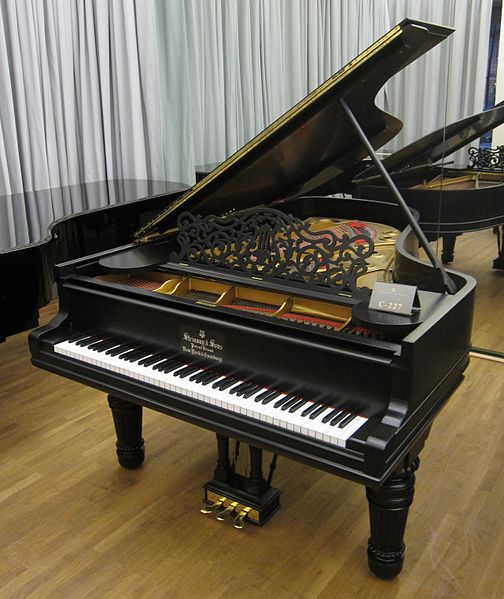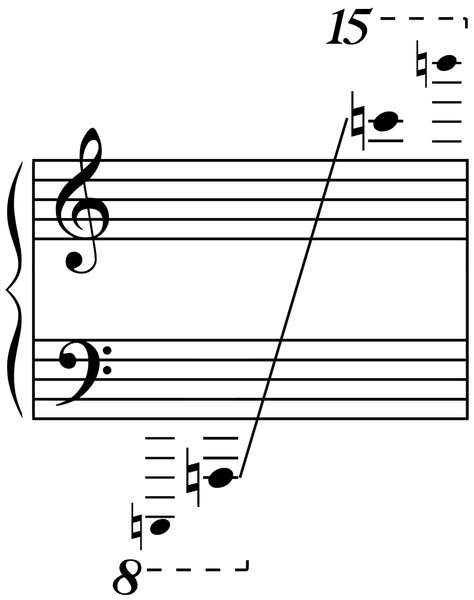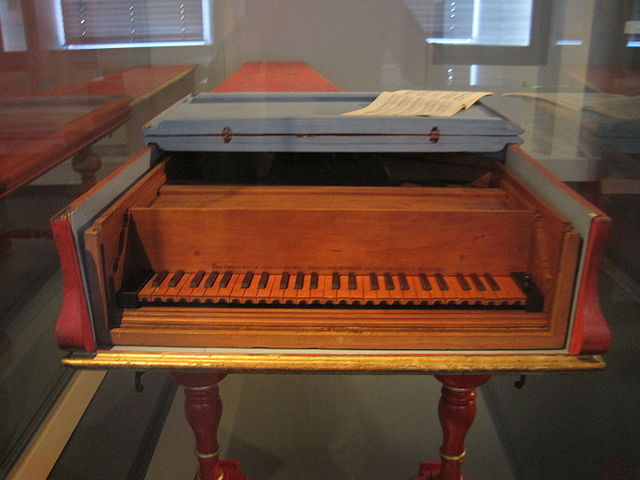Piano tuning is the act of adjusting the tension of the strings of an acoustic piano so that the musical intervals between strings are in tune. The meaning of the term 'in tune', in the context of piano tuning, is not simply a particular fixed set of pitches. Fine piano tuning requires an assessment of the vibration interaction among notes, which is different for every piano, thus in practice requiring slightly different pitches from any theoretical standard. Pianos are usually tuned to a modified version of the system called equal temperament.
A man tuning an upright piano
A piano tuner's most basic tools include the tuning lever (or "hammer") and mutes
An A440 tuning fork
Some common piano tuning tools: From top to bottom: a tuning lever, a felt mute, a rubber mute, a felt temperament strip (left), and a Papps mute.
The piano is a keyboard instrument that produces sound when its keys are depressed, through engagement of an action whose hammers strike strings. Most pianos have a row of 88 black and white keys, representing each note of the chromatic scale as they repeat throughout the keyboard's span of seven and a quarter octaves. There are 52 white keys, known as “naturals”, and 36 black keys, known as “sharps”. The naturals repeat a pattern of whole steps and half steps unique to any given starting note. These patterns define a diatonic scale. The 36 sharps repeat a pattern of whole steps and minor thirds, which defines a pentatonic scale.
Image: Steinway Vienna 002
Image: Piano droit Weinbach (2)
Image: lossy page 1 Piano Range.tif
The 1726 Cristofori piano in the Musikinstrumenten-Museum in Leipzig








